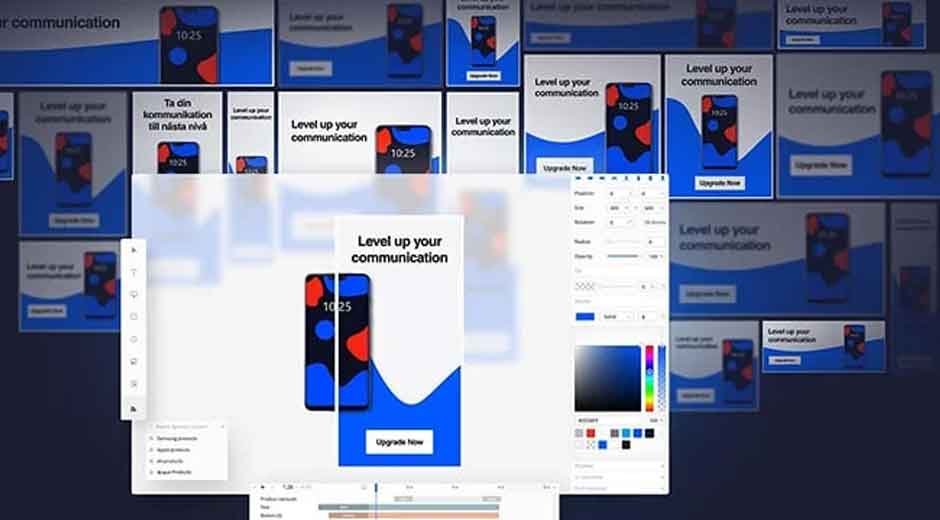Skip to the good bit
ToggleDo you still think banner ads are a waste of time? That mindset is leaving money on the table. Banner ads have quietly evolved, and the difference between old-school banners and what’s working now is massive.
What used to be ignored is now being reimagined, with better creative, smarter placement, and stronger performance. If you’re only thinking of those outdated, boxy ads from years ago, you’re missing how much potential they now offer.
Let’s break down why banner ads are back, and how to actually make them work.
Why People Gave Up on Them
Banner ads used to feel like wallpaper. Always there, rarely noticed. Most people had mentally tuned them out. The term banner blindness became well known for a reason.
That happened because they were:
- Overused and poorly targeted
- Visually bland or clunky
- Designed without any real understanding of the audience
- Disconnected from the content around them
For a while, it seemed like banner ads were just going to fade away. But instead, something interesting happened.
What Changed
Today’s digital environment looks very different. Audiences are more selective, platforms are smarter, and creative quality is far more important. But those same factors gave banner ads a chance to evolve.
Modern banners are:
- Faster to load, cleaner in design, and better adapted to mobile
- Paired with more intelligent targeting
- Designed with the user’s context in mind, not just slapped on a page
They’re no longer just about the hard sell. They’re part of a broader brand presence, and when they’re done well, they blend in naturally while still standing out.
Another big shift? More marketers are working with banner ad networks for advertisers, which makes it easier to scale campaigns, test creative formats, and reach highly targeted audiences without doing everything manually. That kind of reach and flexibility wasn’t possible back when banners were at their worst.
Now, with better tools and smarter strategy, banners have become a creative asset, not just digital noise.
The Format Has Come a Long Way
Banner ads used to be static blocks with clunky graphics and tiny text. Now, there’s room to be creative with movement, interaction, and context. That doesn’t mean they should be overdesigned. It means the format needs to match the setting and device.
On mobile, for example, banners need to load quickly and stay readable without requiring zooming or squinting. On desktop, a slightly more detailed layout can work if it’s done cleanly. What matters most is fitting naturally into the space while still offering something visually engaging.
And don’t underestimate simplicity. A clear message, paired with strong visuals, often does more than animation-heavy designs.
The Real Value Is in Creative Execution
Targeting has improved a lot, but that alone isn’t enough. If the design doesn’t connect, it doesn’t matter who sees it.
There are a few creative principles that always apply, no matter what format you choose:
- Keep one message per banner. Trying to promote multiple things at once dilutes the message and confuses the viewer.
- Make your call to action easy to understand. Whether it’s “Learn More” or “Shop Now,” the next step should be obvious.
- Don’t over-brand. Include your logo, but don’t let it take over the entire space. Let the content do the heavy lifting.
- Use contrast to guide the eye. Design elements should lead people naturally from headline to CTA.
This kind of design discipline keeps banners from looking cluttered or amateurish. A polished banner sends a subtle but powerful message: this brand knows what it’s doing.
Smart Formats That Work Better
Old static banners still exist, but they’re rarely the top performers. Some newer styles have proven far more effective at catching attention without being disruptive.
Here are five that consistently do well:
- Expandable banners– These grow on interaction, offering more info without taking up permanent space.
- Animated HTML5 banners– Lightweight movement can make a banner feel dynamic without being distracting.
- Carousel formats– Let viewers swipe or scroll through several offers or features in the same ad.
- Gamified banners– A small interaction, like tapping to reveal a discount, can increase engagement.
- Contextual creative– Ads that adapt to the page’s topic or the viewer’s location often feel more relevant.
Not every campaign needs these formats, but experimenting with them can reveal what your audience responds to best.
Don’t Chase Clicks Alone
Click-through rates still get attention, but they shouldn’t be the only goal. Many banner ads work more like billboards: subtle, persistent, and designed to build familiarity.
A strong visual paired with consistent exposure can increase brand recall even if no one clicks. Over time, this kind of presence contributes to conversions in ways that don’t always show up on a basic report.
So yes, measure performance. But look beyond surface metrics.
Think Bigger Than the Box
Banner ads don’t have to be boring, and they’re not dead. They just needed a reinvention. The ones that work now are thoughtfully designed, placed with purpose, and backed by smart creative thinking.
It’s not about filling a space with a promo. It’s about using that space well.
So next time you plan a campaign, treat your banner ads as more than filler. They can be sleek, strategic, and surprisingly effective, if you give them the attention they deserve.







